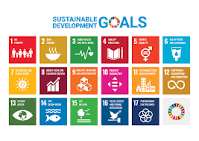THE INFLUENCE OF SOCIAL MEDIA ON TEEN SOCIAL BEHAVIOR IN PUBLIC
In the crowded streets, parks, and cafés of Nepal’s towns and cities,
teenagers gather in familiar clusters—some chatting animatedly, others absorbed
in their phones. Yet, beneath these visible interactions lies a subtler
transformation shaped by social media, a force that is redefining how young
people engage with each other and their public surroundings. Observing teens
today, it becomes clear that social media profoundly influences not only what
they share but how they behave, relate, and perform their identities in public
spaces.
Social media platforms like Instagram, TikTok, and Facebook have extended
the social lives of teenagers far beyond physical spaces. They offer virtual
stages where likes, comments, and shares validate presence and popularity. This
digital affirmation often translates into behaviors seen in public—curated
appearances, conscious gestures, and selective speech tailored to potential
online audiences. Teenagers may craft moments in public with an eye on their
virtual footprint, blurring the line between authentic interaction and
performance.
This shift has multiple dimensions. On one hand, social media fosters
connection and community. Teens use their phones to share experiences,
coordinate meetups, and express creativity. Group selfies, live streams, and
shared hashtags strengthen bonds and create a collective identity visible both
online and offline. In this way, social media can enhance social cohesion,
providing tools for belonging in a rapidly changing world.
On the other hand, it introduces new pressures and complexities. The
constant awareness of being watched—or potentially watched—can lead to
heightened self-consciousness, anxiety, and competition. Teen gatherings may
sometimes feel staged, with conversations interrupted by the need to capture
the “perfect” moment or document events for followers. This performative aspect
can detract from spontaneous, unmediated connection, replacing it with a cycle
of validation-seeking.
Moreover, social media influences how teens negotiate peer relationships
and status hierarchies in public. Online popularity can affect real-world
dynamics, where those with more followers or viral content may wield greater
influence or social capital. This crossover impacts inclusion, exclusion, and
even bullying, as public behavior becomes entangled with digital reputations.
The line between online and offline conflicts often blurs, complicating how
teens manage social tensions.
The impact of social media on teen behavior also raises questions about
privacy and boundaries. In public, conversations are frequently interrupted by
notifications, cameras are pointed at friends without consent, and moments
intended to be private are sometimes broadcast widely. Navigating these issues
requires new social skills and awareness, which teens are still learning amid
rapidly evolving norms.
Yet, it is important to recognize the agency of young people. Many teens
are critically aware of social media’s influence and actively negotiate how
they present themselves both online and in public. They use humor, irony, and
digital literacy to resist pressures and carve out spaces for genuine
interaction. Schools, families, and communities can support this by fostering
open conversations about media use, empathy, and respect.
In observing the influence of social media on teen social behavior in
public, we witness a generation balancing connection and individuality,
performance and authenticity, online and offline worlds. Their experiences
reflect broader societal shifts in communication, identity, and belonging.
Understanding these dynamics is key to supporting young people as they navigate
the challenges and opportunities of a digitally connected public life.

Comments
Post a Comment